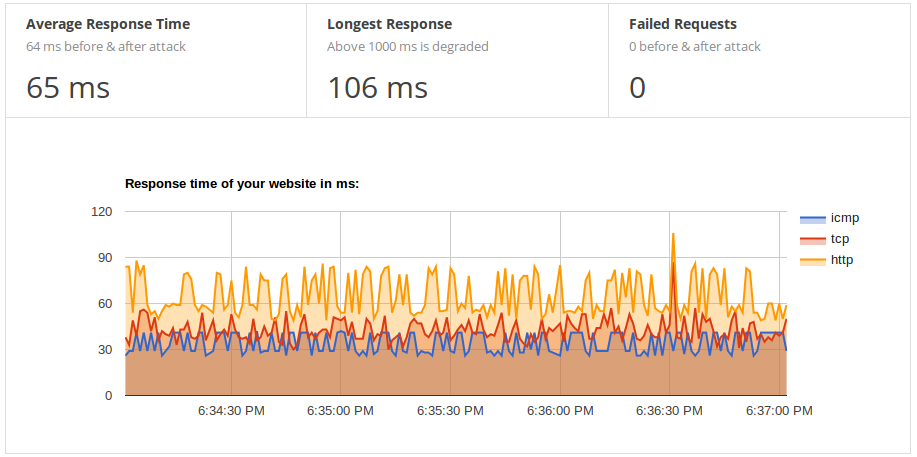The web is now very efficient, beautiful and dynamic. Your business needs to display all the dynamic content that react in real-time with your clients. How can you sustain >7k concurrent connections when a few hundreds kill your webapp? IIS and NGINX both offer powerful caching mechanism that will boost the dynamic content delivery of your server from few hundreds connections to several thousands!
Caching in action
We deployed a standard wordpress website on a LEMP stack in a small VM with 1 vCpu and 512 MB RAM. We did a 7k connections Free DDoS with a 2 minutes rampup on the website without caching and with caching.

Without dynamic content caching
We can observe that the response time of the HTTP request go very quickly higher than 2 seconds to answer and they are even going as high as 5 seconds and 84 failed requests.

With dynamic content caching
We are now using the exact same server with caching enable. We can observe that the average response time is around 65 milliseconds instead of 2 seconds!

We can’t cache because our users need real-time
Imagine that your website receive a steady 100 connections at every seconds during peak hours. This mean that your dynamic language like php, asp, ruby, python, a custom api will need to process 6k queries per minute.
Now let’s say that you receive a DDoS generating 10k concurrent connections per second. Your backend will receive 600k connections per minute and will become unresponsive.
Even if you cache 10 seconds, you reduce the load to your backend from 600k to 6 per minute!
How much real-time do you need? This is unique to every business and it’s up to you to define those metrics for your users.
How to deploy dynamic content caching?
This feature is included in any secure, modern and fast web servers. Because you are running either IIS or Nginx, right?
- For the Nginx users, you can use fastcgi_cache module.
- For the IIS users, you can use IIS output caching.
Need help to implement dynamic content caching?
Caching will make sure that you can sustain any sudden DDoS. Also, it will boost your website from a small blog to a kicking ass website! We can implement Dynamic Content Caching for your Business. Please write to us for the details info@ddostest.me.

